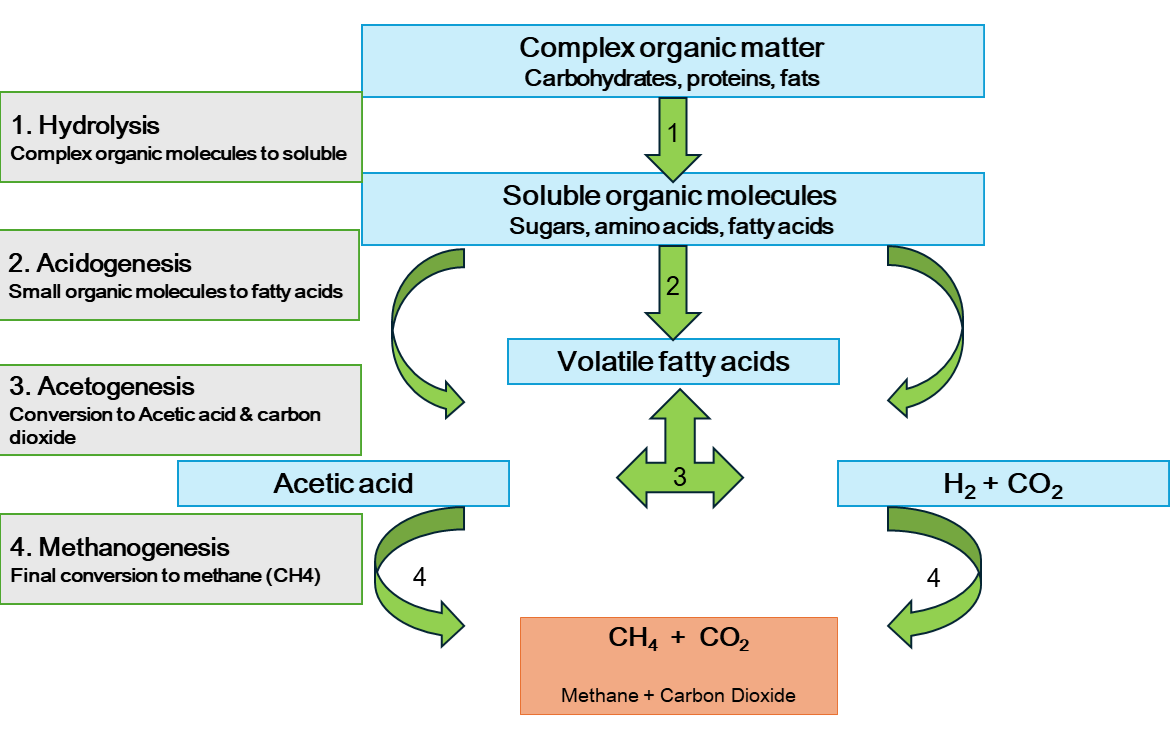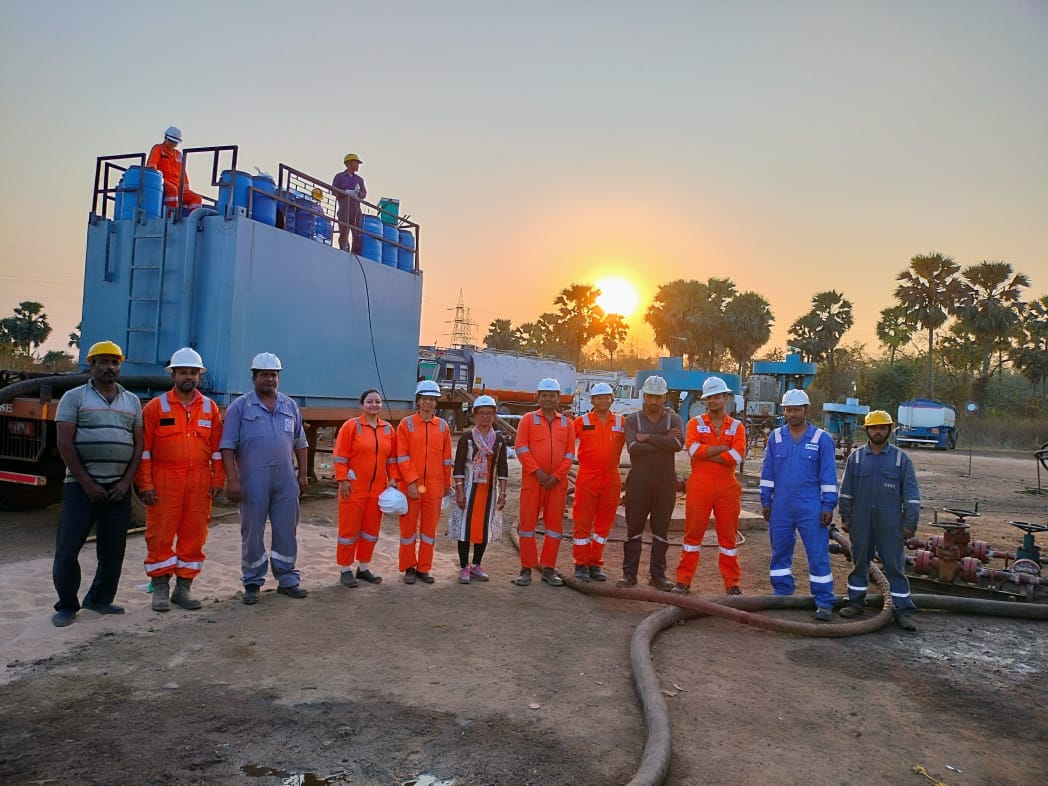Coalbed methane (CBM) represents a significant portion of the world’s natural gas reserves, and it has been suggested that up to 20% of the world’s natural gas, including CBM, is microbial in origin. However, the drilling and maintenance of microbial CBM wells are becoming increasingly uneconomical due to the currently low gas prices, growing competition from shale gas production, and the relatively short lifespan of CBM production wells.

From around 2000, rising natural gas prices led to a rapid expansion of CBM development (drilling and production) in the United States, primarily in the basins, such as San Juan, Powder River, Illinois, Gulf Coast, Black Warrior, and Appalachian, which can be demonstrated by the increase in active production wells in the Powder River Basin (PRB). Coalbed methane in the Powder River Basin is microbial in origin, while CBM in the San Juan, Illinois, Black Warrior, Appalachian, and Gulf Coast basins is a mixture of biogenic and thermogenic gas. The development of CBM has facilitated greater access for researchers to coal formations, thereby making it possible for them to collect water and gas samples to study Microbially Enhanced Coalbed Methane (MECoM) processes. Additionally, as gas prices began to fall in the summer of 2008, commercial groups interested in MECoM were able to purchase wells for pilot field studies from companies that had divested their interest in CBM.
This shift provided an opportunity for further research and development in the MECoM space, supporting the advancement of pilot projects.
While MECoM companies and basic research groups have all made significant progress in understanding the process of microbial CBM generation and moving toward commercial implementation of the MECoM technology, there remain several significant knowledge gaps that must be addressed.
CBM is a form of natural gas that is found trapped within coal seams. Unlike conventional natural gas, which accumulates in porous rock formations, CBM is stored within the coal itself, adsorbed onto the surface of the coal particles. It is primarily composed of methane (CH₄), the cleanest burning fossil fuel.
CBM has emerged as an important unconventional energy resource due to its abundance and lower carbon footprint compared to coal and oil. Extracting methane from coalbeds not only provides a valuable energy source but also helps in reducing greenhouse gas (GHG) emissions from coal mines, where methane is often released into the atmosphere as a potent pollutant. As the world moves toward cleaner and more sustainable energy sources, CBM plays a transitional role—bridging the gap between high-emission fossil fuels and renewable energy. It offers a relatively cleaner alternative for power generation, industrial use, and domestic energy needs while supporting energy security and diversification.
For instance, little is understood regarding microbial processes upstream of methanogenesis, especially which microorganisms are responsible for breaking down the coal, what fraction of the coal is most susceptible to microbial degradation, and how this process might be stimulated, including making less labile (more stable) coal fractions more bioavailable. Studies are needed to determine the function of microorganisms found in association with methanogens in CBM reservoirs.

Figure: Biological Methanation pathway
Case Studies
The Energy and Resources Institute (TERI) has been a pioneer in the field of microbial-stimulated CBM, a process that has potential to increase the longevity and productivity of CBM fields. By leveraging microbial activity, CBM can be stimulated to improve production levels in coalbed methane wells. In partnership with ONGC Energy Centre (OEC), TERI continues to conduct various field experiments aimed at enhancing gas production across different CBM wells of Jharia, Bokaro, and Raniganj.
In view of the benefits of microbial processes for conversion of coal to methane in the CBM wells, Oil and Natural Gas Corporation (ONGC) took up a project in April 2007 to work in coalbed methanogens with a specific objective of isolating and developing native microbes to generate methane from coal seams. In 2007, TERI and the Institute of Reservoir Studies (IRS) launched a focused R&D program with the aim at advancing biological methane production specialized anaerobic microbial consortia capable of generating methane from coal under subsurface reservoir conditions. The project continued for three years.
Initially, the studies were conducted at the Jharia coal mines for isolation and development of the thermophilic methanogens for enhanced methane production. Microbial consortia at 50°C-65°C were selected for detailed studies to test their ability for enhanced methane production under reservoir condition. On February 13, 2015, ONGC Energy Centre (OEC) initiated detailed laboratory investigations and process development for enhanced methane production. Under this research project, detailed investigations were conducted across key Indian CBM blocks, including Jharia, Bokaro, Raniganj, and North Karanpura. These blocks represent some of the most promising CBM reserves in the country, characterized by high coal rank, substantial gas content, and strategic importance for India’s unconventional energy development. The study focused on assessing the microbial potential, coal characteristics, and subsurface conditions to evaluate the feasibility of biological methane generation in these regions. Thereafter, two sets of processes were developed and optimized in the laboratory and subsequently taken up for field experiment in Jharia CBM field:
Bio-stimulation: Injection of nutrient solutions to stimulate the indigenous methanogens for enhanced methane production
Bio-augmentation: Injection of methanogen bacteria with nutrients for enhanced methane production
In May 2016, the first bio-stimulation job was carried out in one of the CBM wells in ONGC Bokaro, and the cumulative production in the CBM well was reported to have more than a three-fold increase from its base production. In January 2017, another developed process “bio-augmentation” was carried out in one of the ONGC CBM wells at Jharia and more than a two-fold incremental gas production from its base production was reported during the time. This Microbially Enhanced Coalbed Methane technology was jointly developed and applied by OEC and ONGC, and TERI tested more than 13 CBM wells of ONGC and Essar, which proved to be highly successful. These developed processes have immense potential and could provide a gaseous fuel which is clean and almost renewable, as large amounts of methane can be generated from small quantities of coal. The microbial route could make it possible in future to extract non-extractable coal in the form of methane, which could further make harvesting of hundreds of thousands of cubic metres of non-extractable coal/lignite possible to meet the rising demand of natural gas in India. Currently, TERI is in the process of developing the biological process for non-producing CBM wells.
As the global focus intensifies on cleaner energy and sustainable resource utilization, one of the most promising future directions in Coalbed Methane (CBM) technology is biological methanation—the process of enhancing methane production from coal seams through microbial activity.
Biological methanation leverages naturally occurring or introduced microbial consortia that can break down complex organic matter in coal under anaerobic conditions, converting it into methane. This biogenic approach represents a low-energy, environment-friendly method of increasing methane yields from existing and marginal CBM wells, including those that are no longer economically viable using conventional extraction methods.
Key potential advantages of biological methanation include:
- Sustainable Gas Recovery: Revitalizes depleted or low-yield CBM wells by stimulating microbial methane generation, extending the productive life of coal reservoirs
- In Situ Conversion: Enables methane production directly within the coal seam, reducing the need for intensive surface processing
- Carbon Management: Offers potential synergy with CO₂ sequestration, as certain microbial pathways can convert CO₂ into methane, thus contributing to carbon reduction goals.
Future research and development in this area focus on optimizing microbial strains, nutrient delivery systems, reservoir conditions, and scalability of field applications. As this technology matures, bio-enhanced CBM recovery could significantly contribute to cleaner energy production, improve the economics of CBM operations, and support the broader transition to low-carbon energy systems.
Patent and Publications
Patent application on “METHANE PRODUCTION FROM UNDERGROUND COALBED METHANE WELLS” with application no. 201611034721 filed in India in 2016 has been granted on 26 December 2023 with registration no. 489441
Publications
- Basera, P., Lavania, M., Shinde, O., Sarkar, S. K., & Lal, B. (2022). An operative laboratory investigation of bioconversion route from waste coal to natural energy. Annals of Microbiology, 72(13). https://doi.org/10.1186/s13213-021-01659-z
- Basera, P., Lavania, M., Singh, N., & Lal, B. (2024). Laboratory investigation and core flood demonstration of enhanced biogenic methane generation from lignite. Frontiers in Bioengineering and Biotechnology Biosafety and Biosecurity, 12. https://doi.org/10.3389/fbioe.2024.1308308
- Chawla, M., Lavania, M., Sahu, N., Shekhar, S., Singh, N., More, A., Iyer, M., Kumar, S., Singh, K., & Lal, B. (2023). Culture-independent assessment of the indigenous microbial diversity of Raniganj coalbed methane block, Durgapur. Frontiers in Microbiology, 14, 1233605. https://doi.org/10.3389/fmicb.2023.1233605
- Lavania, M., Cheema, S., Sarma, P. M., Ganapathi, R., & Lal, B. (2014). Methanogenic potential of a thermophilic consortium enriched from coal mine. International Biodeterioration & Biodegradation, 93, 177–185. https://doi.org/10.1016/j.ibiod.2014.05.022
- Rathi, R., Lavania, M., Singh, N., Sarma, P. M., Kishore, P., Hajra, P. N., & Lal, B. (2019). Evaluating indigenous diversity and its potential for microbial methane generation from thermogenic coalbed methane reservoir. Fuel, 250, 362–372. https://doi.org/10.1016/j.fuel.2019.03.125
- Rathi, R., Priya, A., Vohra, M., Lavania, M., Lal, B., & Sarma, P. M. (2015). Development of a microbial process for methane generation from bituminous coal at thermophilic conditions. International Journal of Coal Geology, 147–148, 25–34. https://doi.org/10.1016/j.coal.2015.06.004



